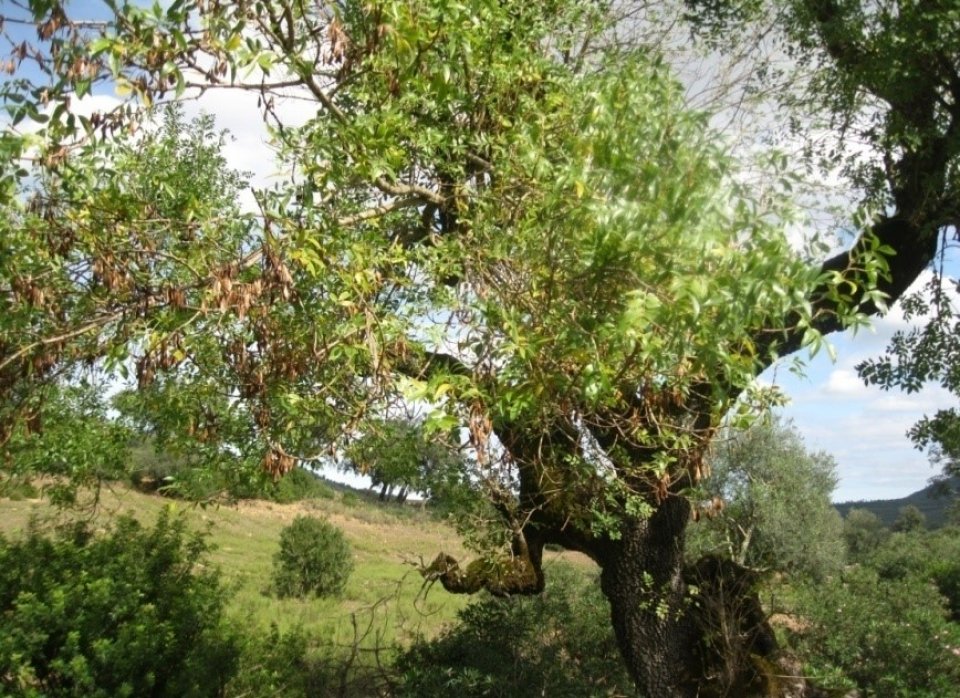
The ultimate objectives of this work were to find new potential sources of natural antioxidants agents in the food industry. This study is the first to investigate secondary metabolites and biological activities of barks and leaves of Fraxinus angustifolia Vahl. subsp. angustifolia (Oleaceae), Tunisian native tree, from two provenances (Béja and Nefza) were investigated using two solvents extracts (ethanol and distilled water).
Among the various medicinal and culinary tree, some native species are of particular interest because they may be used for the production of raw materials or preparations containing molecules with significant antioxidant capacities and health benefits. Among these species, we listed Fraxinus angustifolia Vahl. subsp. angustifolia (Oleaceae) as a Tunisian native tree.
The obtained results showed that Fraxinus angustifolia is a very rich plant in secondary metabolites. High contents in polyphenols, flavonoids, and tannins were observed in both extracts of all studied organs. Significant differences were found between both provenances of the two organs. The highest amounts of polyphenols (24,84 ± 0,57 mg GAE/g DW), flavonoids (2,71 ± 0,15 mg CE/g DW), total tannins (138,07 ± 5,77 mg CE/g DW) and condensed tannins (68,43 ± 5,76 mg CE/g DW) were shown for Béja bark ethanolic extracts. The level of antioxidant activity estimated by DPPH test systems was high for Nefza bark (IC50 = 7,12 ± 0,07 µg/ml) and Nefza ethanolic extracts leaves (IC50 = 8,81 ± 0,20 µg/ml).
These results are preliminary; it would be interesting to do additional studies to understand the molecular and cellular mechanisms of these effects. These studies should also be directed towards the purification of extracts and the evaluation of purified compounds for their effects on the indications involved in biological activities.
Our result exhibited significant differences in the content of polyphenols, flavonoids, total, and condensed tannins according to the solvent extracting. The significant variability between the fractions, in the phenolic compounds, may be attributed to the extracting power of the solvent used and its chemical nature, structure, degree of polymerization, and the interaction of these compounds with each other.
This study was the first report of the antioxidant activity of extracts from leave and bark extracts of F. angustifolia in Tunisia. These promising results open the way for further investigations to purify and identify active molecules. Our results showed that the barks were the organ that gives the highest level in polyphenol, flavonoid, total and condensed tannins contents which favor them in industrial use for extraction.
IssamTouhami, issam_touhami@yahoo.fr, www.inrgref.agrinet.tn
Hanene Ghazghazie, hanene8116@yahoo.fr, www.inrgref.agrinet.tn
Ibtissem Taghouti, ibtissem.taghouti@gmail.com, www.inrgref.agrinet.tn
Mohamed Tahar Elaieb, ayeb2002@yahoo.fr, www.inrgref.agrinet.tn
Further information
Dewanto V, Wu X, Adom KK, Liu RH (2002) Thermal processing enhances the nutritional value of tomatoes by increasing total antioxidant activity. J Agric Food Chem 50:3010-3014.
Hanato T, Kagawa H, Yasuhara T, Okuda, T (1988) Two new flavonoids and other constituents in licorice root: their relative astringency and radical scavenging effect. Chem Pharm Bull 36, 1090-1097.
Lister E, Wilson P (2001) Measurement of total phenolics and ABTS assay for antioxidant activity (personal communication). Lincoln, New Zealand: Crop Research Institute.
Issam Touhami

Issam Touhami
